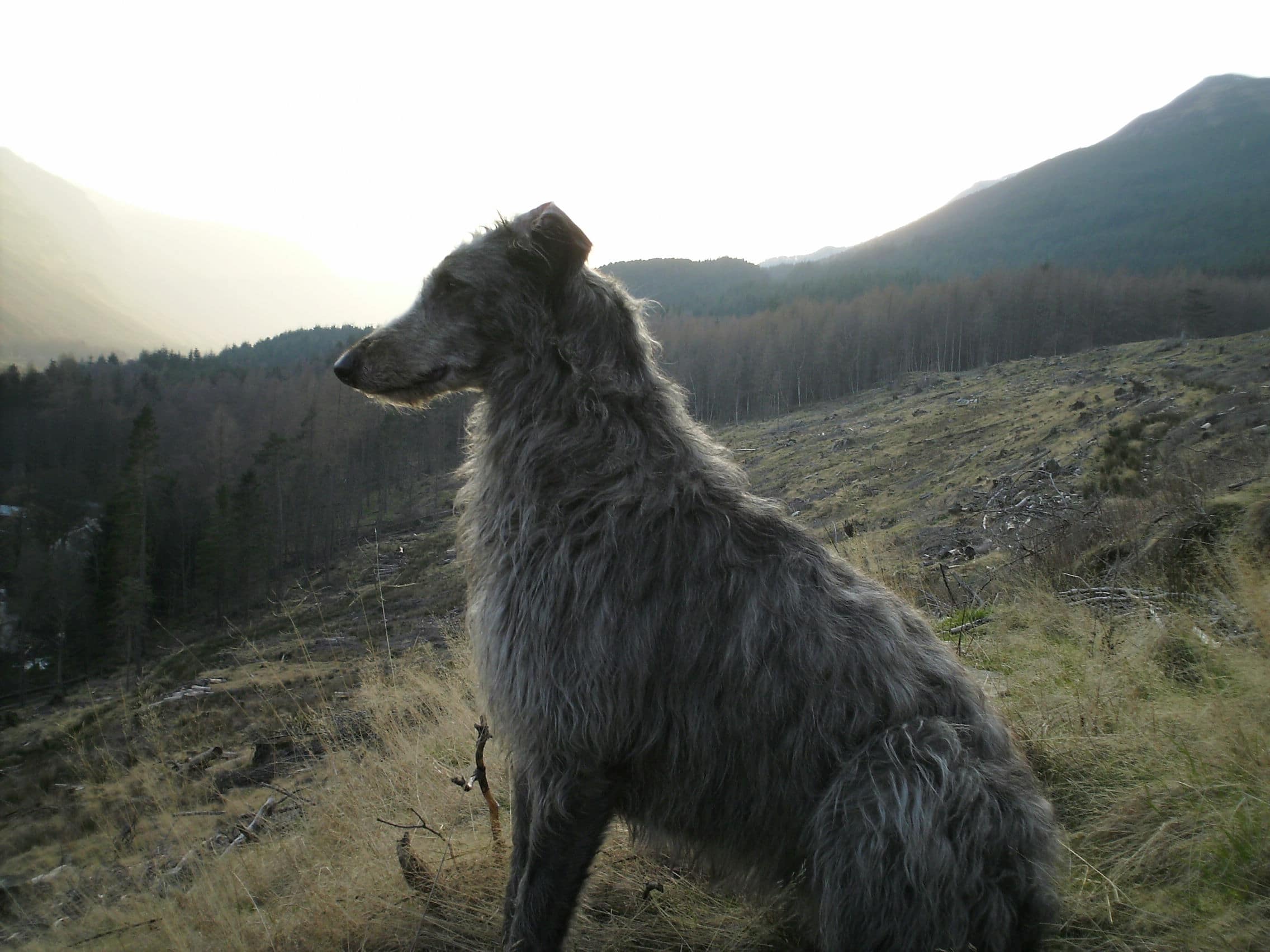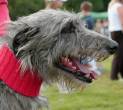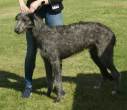Content |
|---|
Characteristics "Deerhound"
Coexistence is important that you have with your new friend. Before considering the acquisition of a dog of the breed "Deerhound" you know certain factors. Not all breeds of dogs are apt to live in an apartment, you must take into account his character, their need for exercise, their interaction with other pets, their care and if you have small children, their level of tolerance towards them.
Adaptation ⓘ3.0 out of 5 stars (based on 1 review)
|
friendly dog ⓘ3.0 out of 5 stars (based on 1 review)
|
hair loss ⓘ3.0 out of 5 stars (based on 1 review)
|
|---|---|---|
Affection level ⓘ5.0 out of 5 stars (based on 1 review)
|
Need for exercise ⓘ5.0 out of 5 stars (based on 1 review)
|
Social need ⓘ5.0 out of 5 stars (based on 1 review)
|
Home ⓘ2.0 out of 5 stars (based on 1 review)
|
Toilet ⓘ2.0 out of 5 stars (based on 1 review)
|
Friendly with strangers ⓘ3.0 out of 5 stars (based on 1 review)
|
barking ⓘ1.0 out of 5 stars (based on 1 review)
|
Health ⓘ3.0 out of 5 stars (based on 1 review)
|
Territorial ⓘ2.0 out of 5 stars (based on 1 review)
|
Cat friendly ⓘ2.0 out of 5 stars (based on 1 review)
|
Intelligence ⓘ3.0 out of 5 stars (based on 1 review)
|
Versatility ⓘ3.0 out of 5 stars (based on 1 review)
|
Child friendly ⓘ4.0 out of 5 stars (based on 1 review)
|
Surveillance ⓘ2.0 out of 5 stars (based on 1 review)
|
joy ⓘ4.0 out of 5 stars (based on 1 review)
|
History
Where does the Deerhound “Scottish Deerhound”?
The Deerhound it is one of the oldest and noblest dog breeds in the world. It is an impressive hunting dog and sighthound. Together with his cousin, the Irish wolfhound, slightly larger, displays a distinctive and strongly impressive dog type.
It has the complexion of a large and very strong greyhound and at the same time a rough and shaggy coat. As the name suggests, was the hunting dog of the Scottish high nobility for the red deer. The Scottish Deerhound must be fast, brave and strong enough to attack an adult deer and, at least, knock him down until the hunter can finish him off with the spear. The Deerhound it was also used in other game such as elk or wild boar. The hunts took place in the rugged Scottish Highlands. Dogs had to be fast, strong, persistent and, at the same time, extremely robust and resistant. So later they were also used to exterminate wolves.
With the decline of classical hunting by the high nobility and new firearms with which a deer could be easily shot from a distance, the Deerhound lost importance and was finally almost extinct. British dog lovers, like the great painter Edwin Landseer, were involved in its conservation after 1800. Fortunately, this was very successful. The Scottish Deerhound is closely related to the Irish wolfhound, which is supported by genetic studies carried out by a team of geneticists led by Heidi Parker in 2017. Even today, the appearance of Deerhound singlehandedly distills the conditions of antiquity and medieval times in the Highlands.
There are few more impressive dogs. Although there are still places in the Scottish mountains named after dogs that died hunting, the Scottish Deerhound is a breed in decline now found almost exclusively in South Africa.
Physical characteristics
The Deerhound he has the typical build of a large greyhound. Over this he wears his trademark wiry fur, lean and moisture repellent. The official standard describes its appearance as follows:
The Scottish Deerhound resembles a Greyhound larger coarse hair and stronger bone. His build gives the impression of a unique combination of speed, strength and endurance needed to shoot down a deer; However, its general bearing is of noble dignity.
His coat is disheveled, but not excessive. Woolly hair is not allowed. The correct coat is dense, tight, disheveled, feels hard or stiff. In the body, neck and hindquarters are hard and lean, of about 7-10 cm.; in the head, chest and belly is much softer. Slight fringe of hair on the inside of the front and back legs.
Must measure between 7 and 10 centimeters. The allowed colors are dark blue-gray, the gray or the brindle, the yellow. White spots are undesirable. Unfortunately, It has become common practice at shows that dogs must show at least one 10% additional height at the withers. This tendency to gigantism is detrimental to the health of dogs and makes the already difficult growth phase even more difficult..
How big is a “Scottish Deerhound”?
With a height at the withers from 71 centimeters in females and up to 79 in males, they look awesome. Bitches must weigh about 36, the males ones 45 kg.
How many years does a “Scottish Deerhound”?
The life expectancy of a “Scottish Deerhound” it's hard to measure. There are specimens that barely reach the 6 years, others even reach the 12 and more years in the best physical shape.
Character and skills
The Scottish Deerhound is a Sighthound and a hunting dog. But it's much more than that. He is a sensitive friend who absolutely needs a close connection with his human family.. Shows great empathy and adaptability to its humans. This strong and fast hunter is extremely gentle, calm and free from any aggressiveness.
He is kind and patient with children. At the same time, always show some pride. Thanks to his intelligence and sensitivity, notices any unfair treatment. This hurts. The Deerhound it is an extremely nice and easy to drive companion. It is also an ideal companion for horseback riding or jogging. Given their willingness to hunt, this requires good training and a close bond with its owner, that I should be able to call you at any time. It is an incomparable experience to walk through nature with these dogs. But, A prerequisite for a harmonious coexistence is that the Scottish Deerhound can satisfy your basic needs. This includes running, ideally chasing a dummy hare during coursing.
One Scottish Deerhound who can live up to a certain point his natural running abilities makes an excellent companion and family dog. The official standard describes its character as follows:
Its build evokes the impression of a unique combination of speed, strength and endurance needed to shoot down a deer; However, its general bearing is of noble dignity. Soft and friendly. Obedient and easy to train, as it is eager to please. Docile and fair, never suspicious, aggressive or shy. Shown with quiet dignity.
Care and health of a “Deerhound”
What care does a “Scottish Deerhound”?
The Scottish Deerhound adult is a low maintenance dog. Regular brushing is enough.
Are there diseases typical of the breed? “Scottish Deerhound”?
The Deerhounds, once grown, they are a robust breed.
What is the best food for a “Scottish Deerhound”?
The Deerhounds value a high-quality and varied diet. Expert guidance is essential, especially during the growth phase.
The Scottish Deerhound it's a greyhound. The free run, fast and extensive, it is a basic requirement for the life of its species. Thus, in some regions there are special facilities where greyhounds can satisfy their need to run. Either he runs after a dummy rabbit at the racetrack or during the coursing, or else the dog is made happy with a ball thrower.
where can you buy a “Scottish Deerhound”?
If you want to spend your life with a Scottish Deerhound, you should first check if you have the possibility to leave this Hound released regularly. Ideally, you should enjoy racing. You should only buy your puppy from a reputable breeder.
Images "Deerhound"
Photos:
1 – “Deerhound” female with exceptional longevity: 14 years and 7 months. by Manialize, CC BY-SA 4.0, via Wikimedia Commons
2 – “Scottish Deerhound” by Mark Robinson
3 – “Deerhound” grey, male. by Canarian, CC BY-SA 4.0, via Wikimedia Commons
4 – “Deerhound” by Manialize, CC BY-SA 4.0, via Wikimedia Commons
5 – “Deerhound” at Theodore Roosevelt by Dog Park Andrea Arden
6 – “Deerhound” by Svenska Mässan from Sweden, CC BY 2.0, via Wikimedia Commons
Videos "Deerhound"
Type and recognitions:
- FCI CLASSIFICATION: 164
- Group 10: Sighthounds
- Section 2: Rough-haired Sighthounds. Without working trial..
Federations:
- Standard FCI (International Cynological Federation) Group 10: Section 2: Rough-haired Sighthounds ⓘ
- CCC standard (Canadian Kennel Club / Canadian Kennel Club)
- KC standard (The Kennel Club) ⓘ
- AKC standard (American Kennel Club) (Hound) ⓘ
FCI breed standard "Deerhound"
Alternative names:
1. Scottish Deerhound (English).
2. Scottish Deerhound, Deerhound (French).
3. Scottish Deerhound, Highland Deerhound (German).
4. Deerhound, Galgo escocês, Deerhound escocês (Portuguese).
5. Deerhound (español).







 Scottish Greyhound or Deerhound – Dog Breed
Scottish Greyhound or Deerhound – Dog Breed The Great Scottish Deerhound
The Great Scottish Deerhound Deerhound way of life at Antonius Vertragus
Deerhound way of life at Antonius Vertragus Deerhounds – Bests of Breed
Deerhounds – Bests of Breed